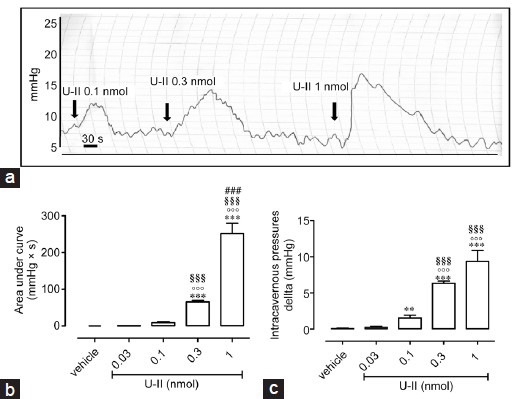Figure 1.

(a) A typical trace showing the increase in intracavernous pressure (ICP) followed by urotensin-II (U-II) intracavernous injection (0.1–1 nmol). The arrows indicate the corresponding time to each intracavernous injection (b). Intracavernous injection of U-II (0.03–1 nmol) causes an increase in ICP expressed as area under the curve(mmHg × s). ***P < 0.001 versus vehicle, °°°P < 0.001 versus U-II 0.03 nmol, §§§P < 0.001 versus U-II 0.1 nmol, ###P < 0.001 versus U-II 0.3 nmol or (c) Delta of increase (mmHg) ***P < 0.001 and **P < 0.01 versus vehicle, °°°P < 0.001 versus U-II 0.03 nmol; §§§P < 0.001 versus U-II 0.1 nmol. Data are calculated as mean ± standard error of mean of n = 5 experiments and analyzed by ANOVA followed by Bonferroni as posttest.
